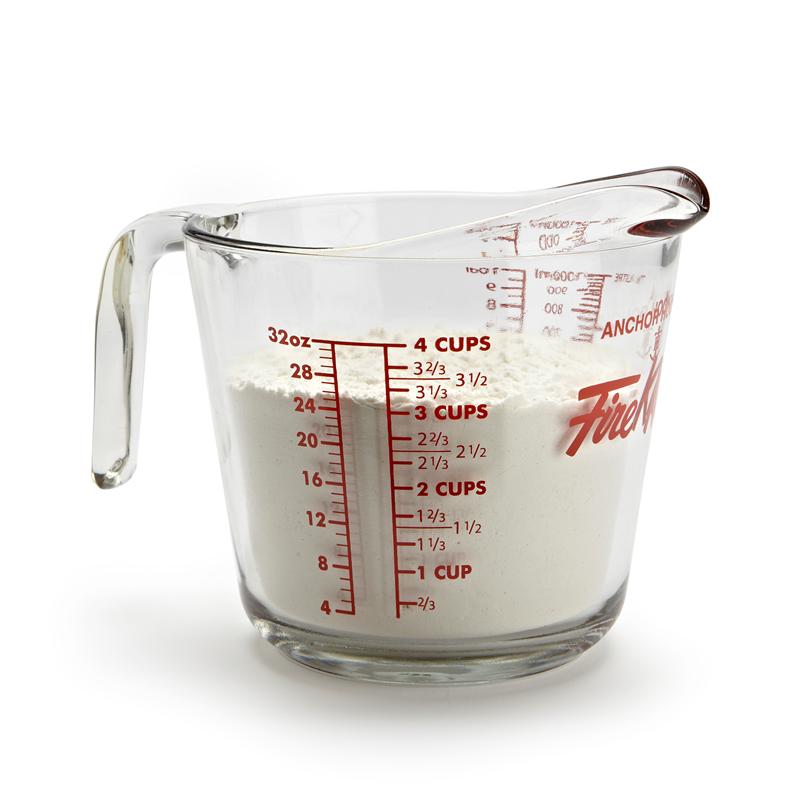Not registered? Create an account for your business
American Cooking Measurements Guide
Need help translating the cups, quarts and butter sticks from those American recipes you keep finding on Pinterest? Want to know where you can buy a rutabaga? Find all the answers here in our handy conversion/translation guide.
Butter
American recipes often refer to the quantity of butter as a proportion of ‘sticks’ or ‘pats’.
- A US pat of butter is between 1-2 tsp
- A US stick of butter weighs 113g
 |
1/8 cup = 30g 1/4 cup = ½ stick = 55g 1/3 cup = 75g 1/2 cup = 1 stick = 115g |
Dried Ingredients
American recipes like to try and keep things simple by using cups to measure ingredients. If you don't have a proper measuring cup, don't just think any cup will do. Be accurate and use the conversions below.
|
1 cup flour = 125g 1 cup caster sugar = 225g 1 cup icing sugar = 125g 1 cup brown sugar = 170g 1 cup chocolate chips = 150g 1 cup cocoa powder = 125g 1 cup chopped walnuts or pecans = 125g 1 cup walnut or pecan halves = 100g 1 cup desiccated coconut = 75g 1 cup grated Cheddar cheese = 120g 1 cup grated Parmesan cheese = 80g 1 cup dried breadcrumbs = 120g 1 cup sultanas or raisins = 170g |
 |
Liquid Ingredients
You may think you're ok with quarts and pints but imperial quarts are different to US liquid quarts and US pints are different to UK pinks. Add cups into the mix and there's a whole lot of potential for baking errors.
- A UK pint is 20 fl.oz or 591 mL
- A US pint is 16 fl.oz or 473 mL
- A US liquid quart is 946 mL
- An imperial quart is 1137 mL
|
1/8 cup = 1 fl.oz = 30 ml 2/3 cup = 5 fl.oz = 160 ml 1/2 cup = 4 fl.oz = 120 ml 3/4 cup = 6 fl.oz = 180 ml 1 cup = 8 fl.oz = 240ml |
 |
Oven temperatures
As a rule of thumb Celsius is roughly half the Fahrenheit temperature.
 |
275°F = 140°C = Gas Mark 1 = cool 300°F = 150°C = Gas Mark 2 325°F = 165°C = Gas Mark 3 350°F = 180°C = Gas Mark 4 = moderate 375°F = 190°C = Gas Mark 5 400°F = 200°C = Gas Mark 6 = moderately hot 425°F = 220°C = Gas Mark 7 = hot 450°F = 230°C = Gas Mark 8 475°F = 245°C = Gas Mark 9 = very hot |
Ingredient names
When it comes to the list of ingredients, the variations between British English and American English can be really confusing. Here's some of the common differences which could leave you stumped.
| All-purpose flour – plain flour | Golden raisins – sultanas |
| American bacon – streaky bacon | Green onions – spring onions |
| Arugula – rocket | Heavy cream – double cream |
| Beet – beetroot | Jello – jelly |
| Bread flour – strong flour | Navy beans – haricot beans |
| Brown sugar – demerara sugar | Peanut oil – groundnut oil |
| Candy – sweets | Pie spice mix – mixed spice |
| Canola oil – rapeseed oil | Potato chips – crisps |
| Cheesecloth – muslin | Rutabaga – swede |
| Cilantro – coriander | Snow peas – mangetout |
| Confectioners’ sugar – icing sugar | Sour cherries – morello cherries |
| Cornstarch – corn flour | Squash – marrow |
| Cotton candy – candy floss | Superfine sugar – caster sugar |
| Eggplant – aubergine | Tomato paste – tomato puree |
| Endive – chicory | Wax paper – grease proof paper |
| Fava beans – broad beans | Zucchini – courgette |
